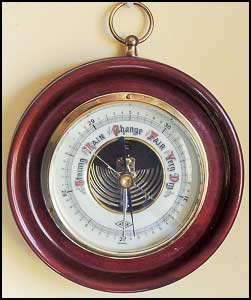27 September 2019 — 1249 mdt
Big storm’s a-comin’ — how low will your station pressure go?
The weatherman has bad news for our weekend:
This storm would be a big deal any time of winter, but it is especially significant since it is happening in September. A winter storm warning is in effect for Glacier National Park, Marias Pass, and the Flathead National Forest with winter storm watches across central Idaho and the rest of western Montana.
Time to turn up the heat, pull on an extra sweater, and keep an eye on the barometer. Just how low will the pressure fall at the peak of the storm? I’ll be watching three barometers, two at my place northwest of Kalispell, and via the internet, the decoded METAR observations from the National Weather Service’s station at Kalispell Glacier International Airport (KGPI).
KGPI’s elevation is 2,972. Normal pressure, converted to sea level, is 29.92 inches of mercury. The actual pressure, known as the station pressure in the table of METAR reading, is 26.84 inHg. At that pressure, water boils at approximately 206°F.
At 1055 MDT this morning, the station pressure at KGPI was 26.81 inHg. That’s normal.

My home’s elevation is 3,040. My more than half-century old aneroid barometer, a beautiful instrument set in mahogany, read 26.86 inHg at 1055 MDT. I adjusted it a month ago. My second barometer is a small chip in my Garmin Vista Trek H GPS receiver. At 1055 MDT, it read 26.76 inHg. It’s the more accurate, more precise, of my two barometers.
Parenthetically, I’d like to own a mercury filled Torrecilli barometer, an elegant instrument, but the living quarters assigned to people caught in possession of that amount of mercury are secure, but far from elegant.
So, how far will the glass fall this weekend? For a comparison, the lowest pressure for Hurricane Dorian, the category five storm that wreck Great Abaco Island in the Bahamas, was 26.87 inHg. That’s low, but not the lowest recorded in the United States. That honor belongs to the Labor Day Hurricane of 1935, during which the lowest pressure recorded was 26.30 or 26.35. In a 30 March 1939 memo to the chief of the Army Corps of Engineers, Col Lewis H. Watkins reported:
Low barometer reading at Craig, Milepost 451, the storm center as it passed over the keys, September 2, 1935, 8:20 to 9:25 p.m., 26.40 inches: Observers, Capt. Ivar Olsen, R. W. Craig and R. C. Jackson. This barometer was located by employees of this office and Capt. Olsen, the owner, agreed to turn it over to us for calibration. It was turned over to the Miami Weather Bureau for test readings. The Miami Weather Bureau corrected the reading to 26.38 inches, then sent it to the Weather Bureau at Washington, for further test. The Weather Bureau at Washington found the corrected reading to be 26.35 inches. As these men were exposed and in the open, no recording were made of readings, but the low point reached by the barometer pointer was marked on the barometer case.
The 26.35 inHg recorded at Craig corresponds to an altitude of ≈ 3,500 feet under normal conditions.
